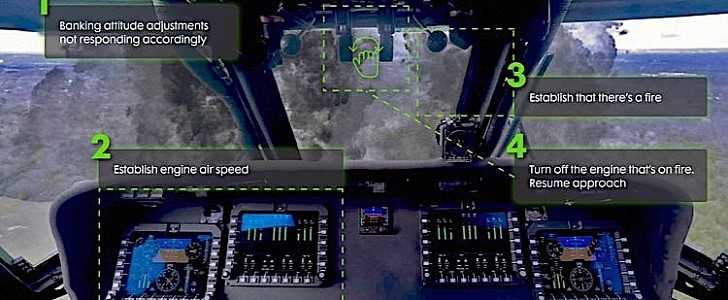Artificial intelligence is not quite here yet, but the vanguard of the breed, the personal assistants like Amazon’s Alexa, or Google, or Cortana, have already changed the world as we know it.
Personal assistants are pretty much in everything we use today, from the smartphones in our pockets to the cars we drive and even the refrigerators in our kitchens. But for one reason or another, they’re not as widespread in the military.
That will probably change soon, and the shift will begin with the mighty UH-60 Black Hawk helicopters. The engine behind the change is of course DARPA and its Perceptually-enabled Task Guidance (PTG) program.
The agency is presently working on ways to give helicopter pilots access to “complex mental and physical tasks” that are not necessarily possible using today’s mostly audio warning systems available in helicopters.
The AI assistant will plug into existing augmented reality (AR) headsets, becoming wearable intelligent tools that can provide “feedback and guidance through speech and aligned graphics at the right place and time to augment the aircrew.”
First in line to develop such a system is defense contractor Northrop Grumman, who is working with the University of Central Florida (UCF) on something called Operator and Context Adaptive Reasoning Intuitive Assistant.
That’s OCARINA for short, and at the time of writing, that’s all we know about it. No timeline for the development of OCARINA was provided, nor are we aware of the exact capabilities of the system. For what it’s worth, the following statement, coming from Erin Cherry, senior autonomy program manager at Northrop Grumman, sums it up just fine.
“The goal of this prototype is to broaden a pilot’s skillset. It will help teach new tasks, aide in the recognition and reduction of errors, improve task completion time, and most importantly, help to prevent catastrophic events.”
That will probably change soon, and the shift will begin with the mighty UH-60 Black Hawk helicopters. The engine behind the change is of course DARPA and its Perceptually-enabled Task Guidance (PTG) program.
The agency is presently working on ways to give helicopter pilots access to “complex mental and physical tasks” that are not necessarily possible using today’s mostly audio warning systems available in helicopters.
The AI assistant will plug into existing augmented reality (AR) headsets, becoming wearable intelligent tools that can provide “feedback and guidance through speech and aligned graphics at the right place and time to augment the aircrew.”
First in line to develop such a system is defense contractor Northrop Grumman, who is working with the University of Central Florida (UCF) on something called Operator and Context Adaptive Reasoning Intuitive Assistant.
That’s OCARINA for short, and at the time of writing, that’s all we know about it. No timeline for the development of OCARINA was provided, nor are we aware of the exact capabilities of the system. For what it’s worth, the following statement, coming from Erin Cherry, senior autonomy program manager at Northrop Grumman, sums it up just fine.
“The goal of this prototype is to broaden a pilot’s skillset. It will help teach new tasks, aide in the recognition and reduction of errors, improve task completion time, and most importantly, help to prevent catastrophic events.”









